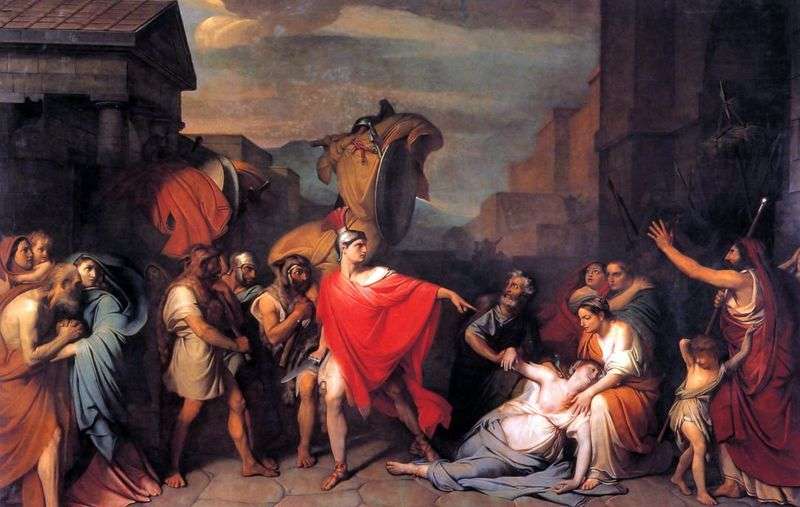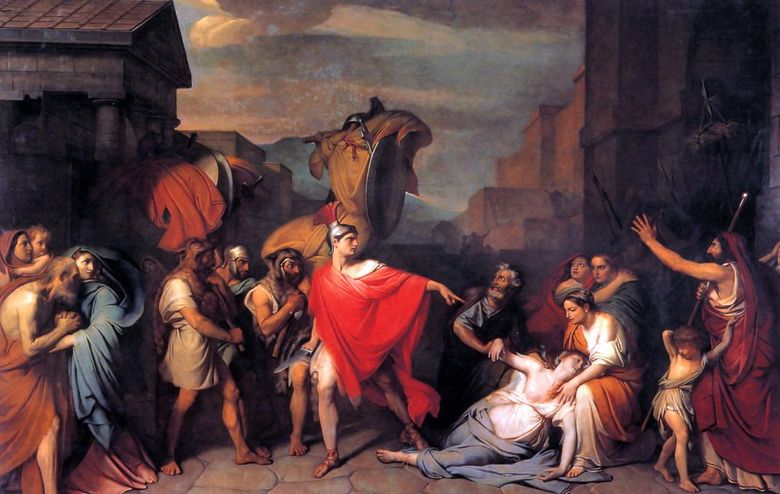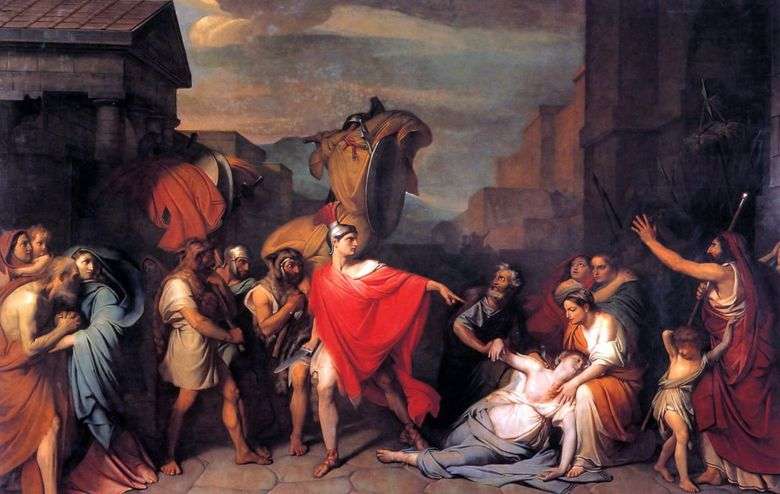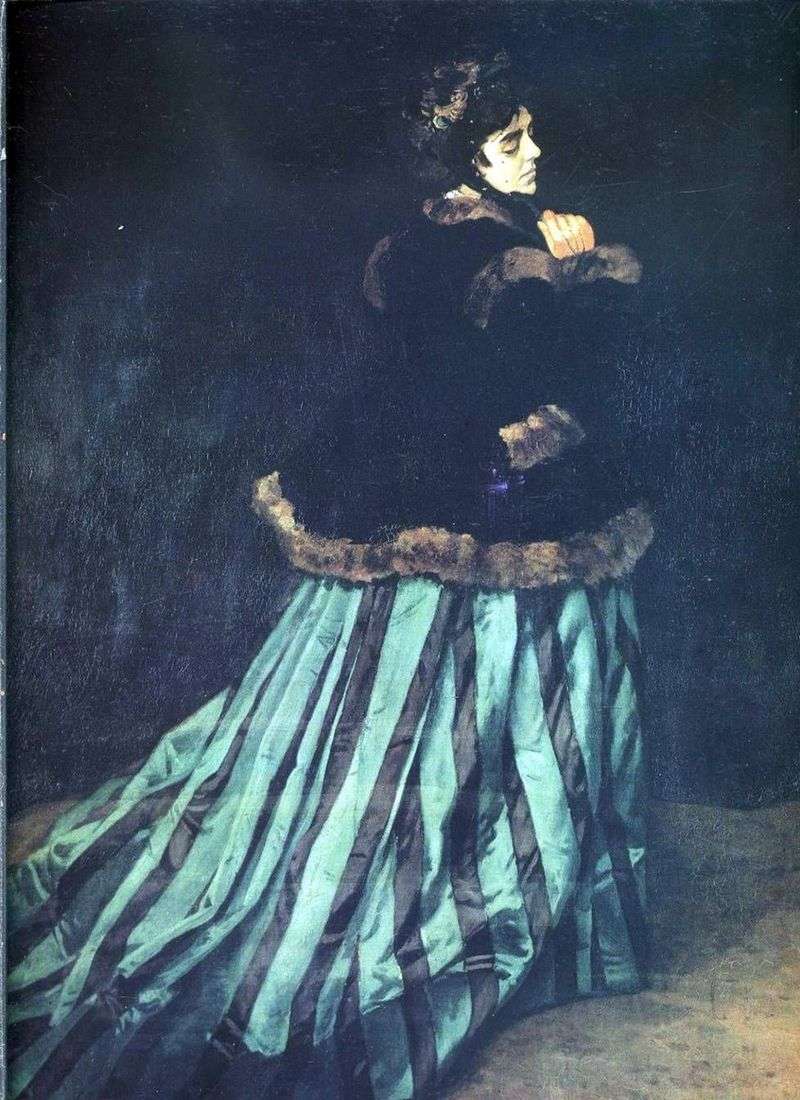
The picture “The Death of Camilla, Sister of Horace” FA Bruni wrote in Rome. The canvas is huge in size – more than five meters in length. The artist exhibited his work on Capitol Hill for public viewing, and it glorified the twenty-year-old author. The connoisseurs found a lot of graceful in composition and drawing pictures.
The plot of the picture will be drawn from ancient Roman history. In times related to distant legends, Rome fought with the city of Alba Long. Three brothers of the Romans, among whom was Horace, joined in the single combat with the three brothers of the Curias from the hostile city. Horace won a difficult victory and returned triumphantly to Rome, where he found his sister Camilla, who mourns Curatia, whom she loved. In a fit of patriotic rage Horace killed his sister. This moment of the final denouement captured Bruni on his canvas. The content and style of the painting is quite in the spirit of Russian classicism of the first half of the XIX century. But it already feels the influence of the ideas of romanticism.
The composition is built according to the traditional academic scheme. The characters are built according to all the rules of the last act in the classic tragedy. The figures are strictly ordered and grouped into beautiful and expressive groups. In the center and in the foreground are the main story heroes: the dying infidel Camilla and Horace, pointing to the victim. All the figures, as if on a proscenium, are in a shallow conditional space. The actors are stylized under the pseudo-historical era of Ancient Rome. Dressed in antique clothes, they with their poses and gestures evoke Hellenistic statues in their memory. Expressions of their faces, which reflect the experience of tragic events, demonstrate the general idea of the work. Beautiful combination of bright colorful tones with volumetric color transitions.
The main character of Horace is highlighted not only compositionally, but also in color: the painter has casually chosen for him a cloak of bright red tones. In his work Bruni sought to psychological reliability, to create tension in the perception of the picture by the viewer. For this painting he in 1834 received the title of academician. In 1897, “The Death of Camilla, Sister of Horace” was transferred from the Imperial Academy of Arts to the Russian Museum of Alexander III. Subsequently, Alexander Benois will write that Bruni created the thing “truly a workshop, but deeply false, as the finale of some false-classical tragedy.” Pelevin Yu. A.
 La mort de Camilla, la sœur d’Horace – Fedor Bruni
La mort de Camilla, la sœur d’Horace – Fedor Bruni The Copper Serpent by Fyodor Bruni
The Copper Serpent by Fyodor Bruni La muerte de Camilla, hermanas de Horacio – Theodore Bruni
La muerte de Camilla, hermanas de Horacio – Theodore Bruni Portrait of ZA Volkonskaya by Fyodor Bruni
Portrait of ZA Volkonskaya by Fyodor Bruni Oath of Horace by Jacques Louis David
Oath of Horace by Jacques Louis David Invalid, submitting a petition to Napoleon on the parade of the Guards before the palace of the Tuileries in Paris by Horace Vernet
Invalid, submitting a petition to Napoleon on the parade of the Guards before the palace of the Tuileries in Paris by Horace Vernet Camilla (Woman in Green Dress) by Claude Monet
Camilla (Woman in Green Dress) by Claude Monet The death of Pompeii by Ivan Aivazovsky
The death of Pompeii by Ivan Aivazovsky